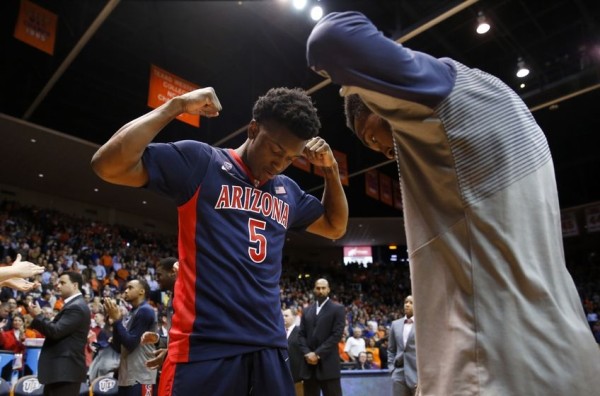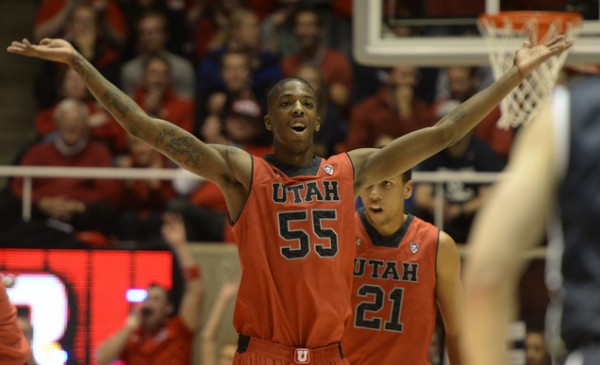Posted by Bennet Hayes on January 21st, 2015
The Wooden Award released its midseason top 25 list last week. College basketball’s top individual honor will likely go to a player named on that list, but there’s still time for others (attention: Wichita State’s Fred VanVleet, Virginia’s Malcolm Brogdon and Syracuse’s Rakeem Christmas) to work their way into the picture. However, it’s also true that the field of real contenders for the award is thinning as we near February and March. RTC handicaps the race for the Wooden…
Jahlil Okafor, Duke. Odds To Win = 3/2.
Any national Player of the Year discussion must begin with Duke’s freshman sensation. Okafor’s averages of 18.6 points, 8.9 rebounds and 1.6 blocks per game begin to explain his value to the Blue Devils, but the impact of his presence runs much deeper than that. His steadiness (double-figure points in every game this season) has stabilized a Duke attack that was far more reliant on the three-point shot a season ago, while his unselfishness has helped the Duke guards find space on the perimeter. The presumptive top pick in next June’s NBA Draft has looked like the best player in college basketball from opening night, but an April coronation as the National Player of the Year will surely depend on Duke’s success. Balance has fueled the rise of other national title contenders (Kentucky and Virginia most notable among them), but there is no question that Okafor will continue to lead the Duke charge. Pole position has been well-earned: This is Okafor’s award to lose.

At The Midway Point Of The Season, Duke Freshman Jahlil Okafor Is The Frontrunner To Win The Wooden Award. (Getty)
Frank Kaminsky, Wisconsin. Odds To Win = 5/2.
Kaminsky nabbed the national spotlight last March with a show-stopping regional final performance against Arizona. He has not given it up since. ‘Frank the Tank’ is grabbing more rebounds (8.2 RPG this season), blocking more shots (1.8 BPG) and even handing out more assists (2.4 APG) than he did a year ago. The Wisconsin center has been outstanding all season, but his value to the Badgers may have been best exhibited in a 40 minute stint on the bench. As their star sat out with a concussion on January 11, Wisconsin fell to Rutgers in one of the most shocking results of the season. The loss showed just how important the versatile center has become for Bo Ryan’s team. A balanced Badgers’ lineup may pose some threat to Kaminsky’s Wooden Award chances, but that surrounding talent is also what’s made the his team legitimate national title contenders. And as Wisconsin chases that elusive championship, its versatile big man is making a serious push for the most prestigious of individual accolades.
Read the rest of this entry »
| rtc analysis
| Tagged: delon wright, duke, feature, frank kaminsky, Fred VanVleet, georges niang, gonzaga, Jahlil Okafor, jerian grant, justin anderson, juwan staten, kentucky, kyle wiltjer, louisville, malcolm brogdon, Montrezl Harrell, notre dame, Stanley Johnson, Tyus Jones, utah, virginia, west virginia, Willie Cauley-Stein, wisconsin, wooden award
Share this story

















































